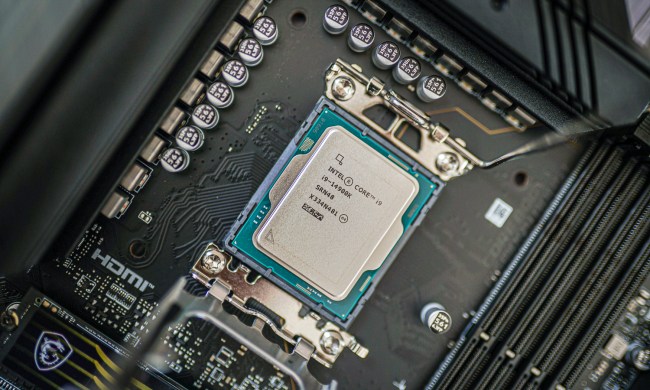Chipmaking giant Intel has kicked off its Intel Developer Forum in San Francisco with demonstrations of its “Sandy Bridge” processors, expected to debut in early 2011 and become the next processor family driving mainstream notebook and desktop PCs. Unlike the current Core series, the 32nm Sandy Bridge chips will feature integrated graphics controllers that will share cache and memory with the processors own core, substantially enhancing graphics performance while keeping a low energy use profile. The chips will also feature an improved version of Intel’s Turbo Boost technology that reallocates processor codes and graphics resources to improve performance.
The Sandy Bridge chips will mark the second generation of Intel’s “Core” processor line, which currently features Core i3, i5, and i7 models.

“The way people and businesses are using computers is evolving at an explosive rate, fueling demand for an even more powerful and visually appealing experience,” said Intel Architecture Group executive VP and general manager Dadi Perlmutter, in a statement. “Our upcoming 2nd Generation Intel Core processor family represents the biggest advance in computing performance and capabilities over any previous generation.’
The integrated graphics controller in the Sandy Bridge processors will be able to handle high-definition and 3D video, graphics-intensive gaming, as well as 3D visualization and rendering tasks. Although those sorts of technologies are readily available on the market now, but integrating them directly into the CPU Intel is essentially shortcutting third-party graphics developers like AMD and Nvidia. With Sandy Bridge, most of the multimedia and graphics capabilities everyday users expect from a reasonable notebook or desktop computer will be built ing, which makes some industry watchers forecast hard times ahead for discrete graphics developers.
Graphics developer Nvidia—which has had an increasingly bitter relationship with Intel in recent years—has downplayed the graphics capabilities of Sandy Bridge, noting that the market for discrete graphics is bigger than ever.
Intel expects Sandy Bridge chips will be in production later this year, and begin appearing on new desktop and notebook PCs in early 2011.



